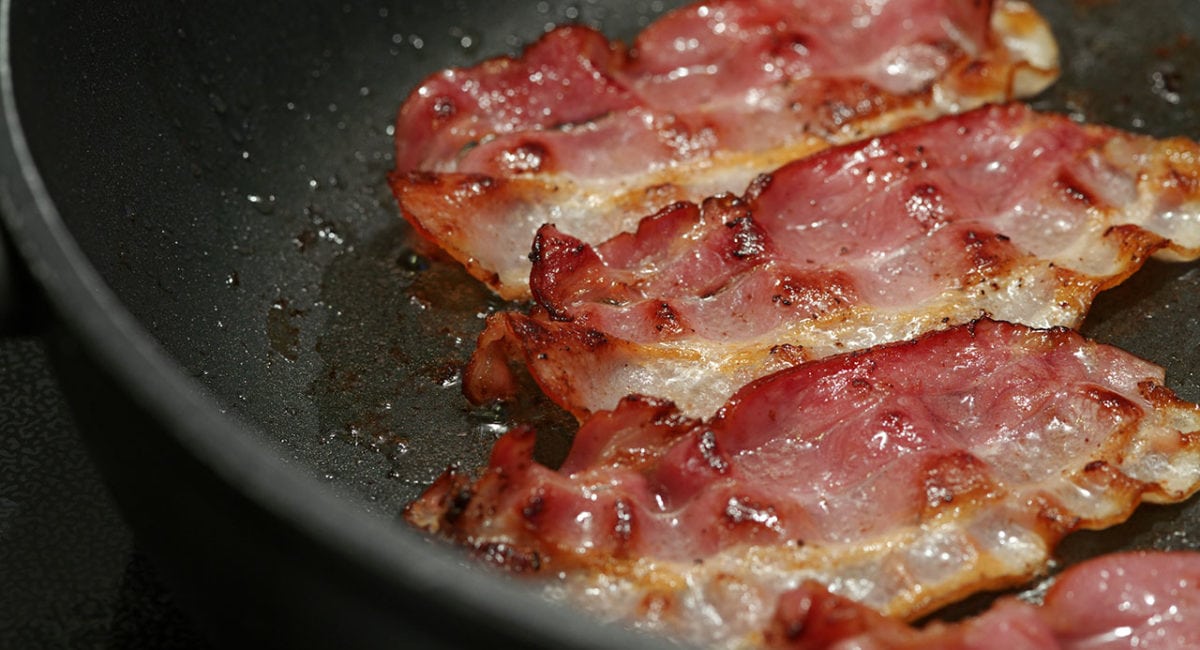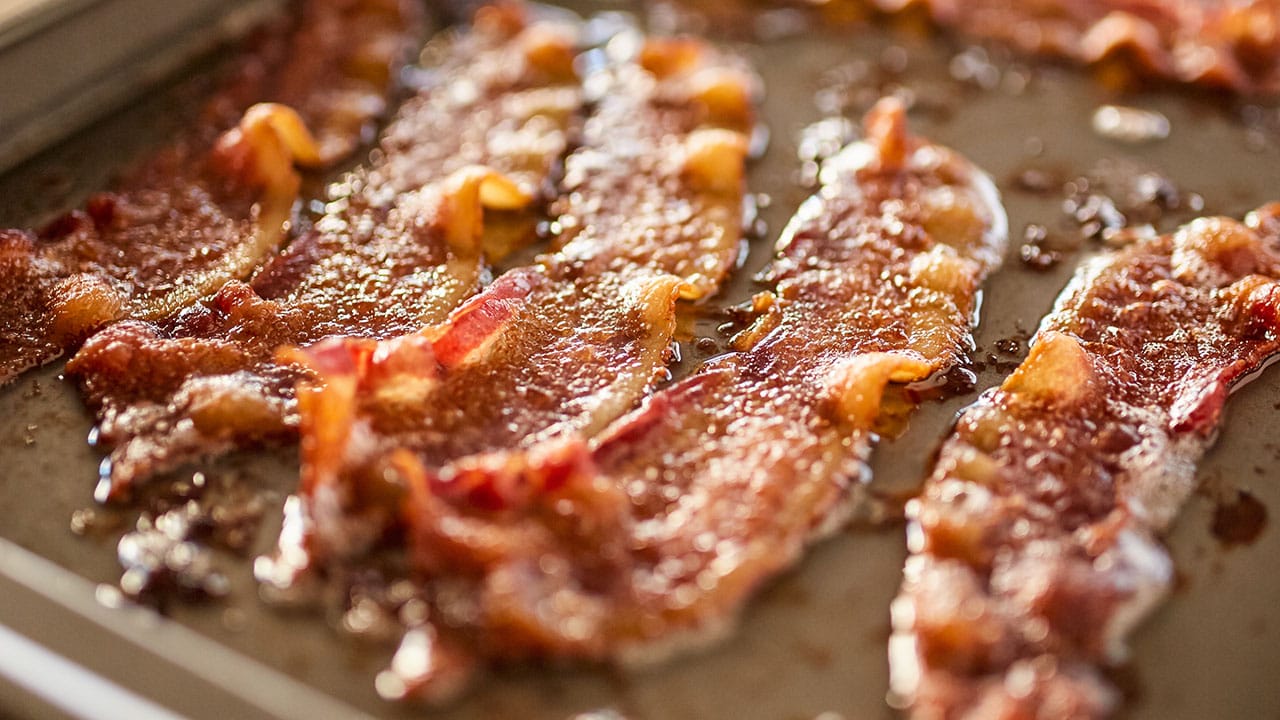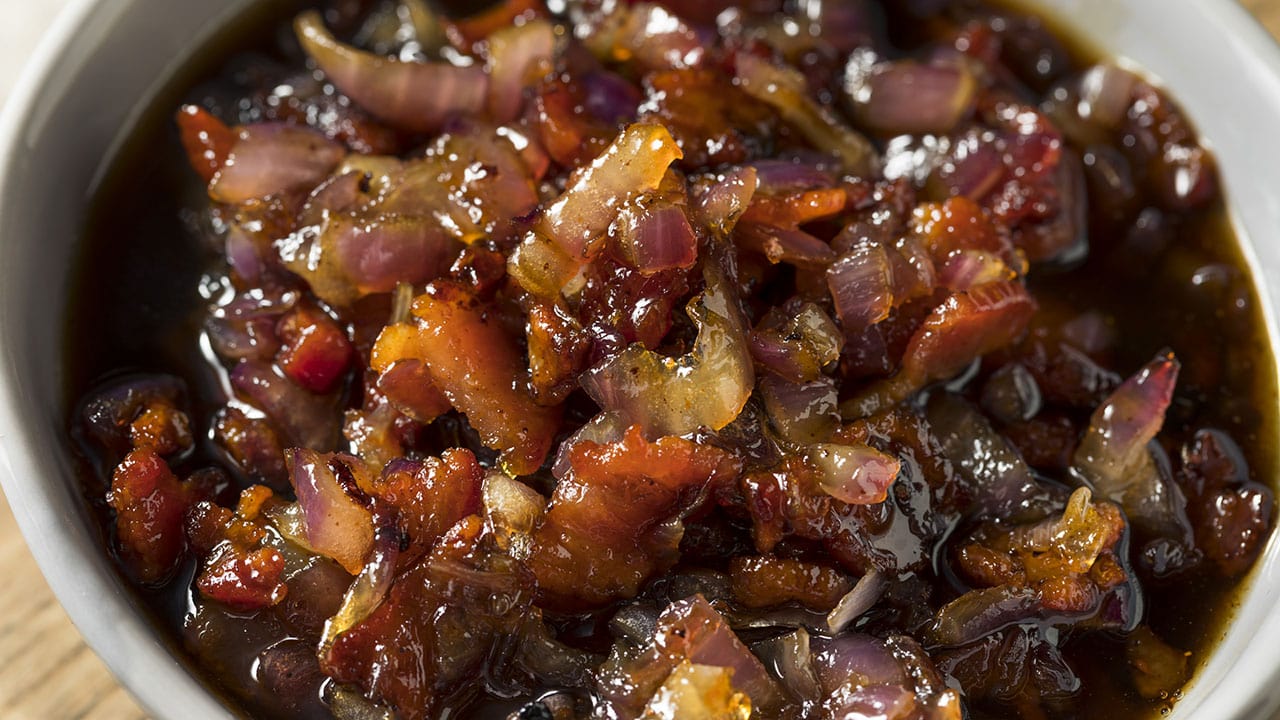The ButcherBox Guide to Bacon
Bacon.
Few foods inspire as much admiration as bacon. Whether for breakfast, lunch, dinner, a snack, or even dessert, bacon inspires love, devotion, and, most importantly, our taste buds and culinary creativity.
Bacon has exploded in popularity over the years with bacon food trucks, bacon festivals, bacon clothing, and countless other bacon-related activities and products trying to satiate the seeming endless widespread yearning for all things bacon.
We love bacon here at ButcherBox, and our members seem to love it as well. One of our most popular products, ButcherBox bacon is sourced from heritage-breed pigs. It is also uncured and free of nitrates and added sugar.
So let’s dig into as much as we possibly can about everyone’s favorite pork treat. In this guide, we’ll break down:
- The history and worldwide appeal of bacon
- Ways to cook bacon beyond breakfast (as part of other meals or as a snack)
- Some of our favorite bacon recipes
- A few tips and tricks on storing, reusing, and preserving bacon
Everything You Want to Know About Bacon
There is a rich history of bacon as a popular food that goes back millennia. There is also a lot to learn about how bacon differs from other related products and how it is used differently around the world.
A Bit of Bacon History
According to the dictionary, bacon is officially described as “a side of a pig cured and smoked.” A staple of American food traditions for centuries, this distinctive and savory meat also has had a long history in the cooking cultures of many global cuisines going further back in time.
Here is a quick timeline of how long bacon has appealed to the palates of humans over the years:
- As far back as 1500 BCE, pork belly was salted and cured in China.
- Both the Greeks and Romans ate some form of bacon, and it eventually was passed down and perfected by other European cultures.
- The term “bacon” is derived from a proto-Germanic word for “back”—where bacon was sometimes derived from on a pig—and eventually found its way to the current English form.
- In English, it was originally referred to as “bacon,” which was also a blanket term for all pork products for a period of time.
- Bacon likely came to the Americas with the first European explorers, as Fernando de Soto brought the first pigs to North America in the 1500s.
- In the 1770s, Englishman John Harris opened the first bacon curing facility in Wiltshire, also creating a brining technique that will be named after the English county of its origin.
- In 1924, Oscar Meyer patented the form of sliced, packaged bacon that is widely used today.
For a bit more on the history of bacon, check out our deeper dive, “For the Love of Bacon: History, Facts, and More.”
Different Kinds of Bacon
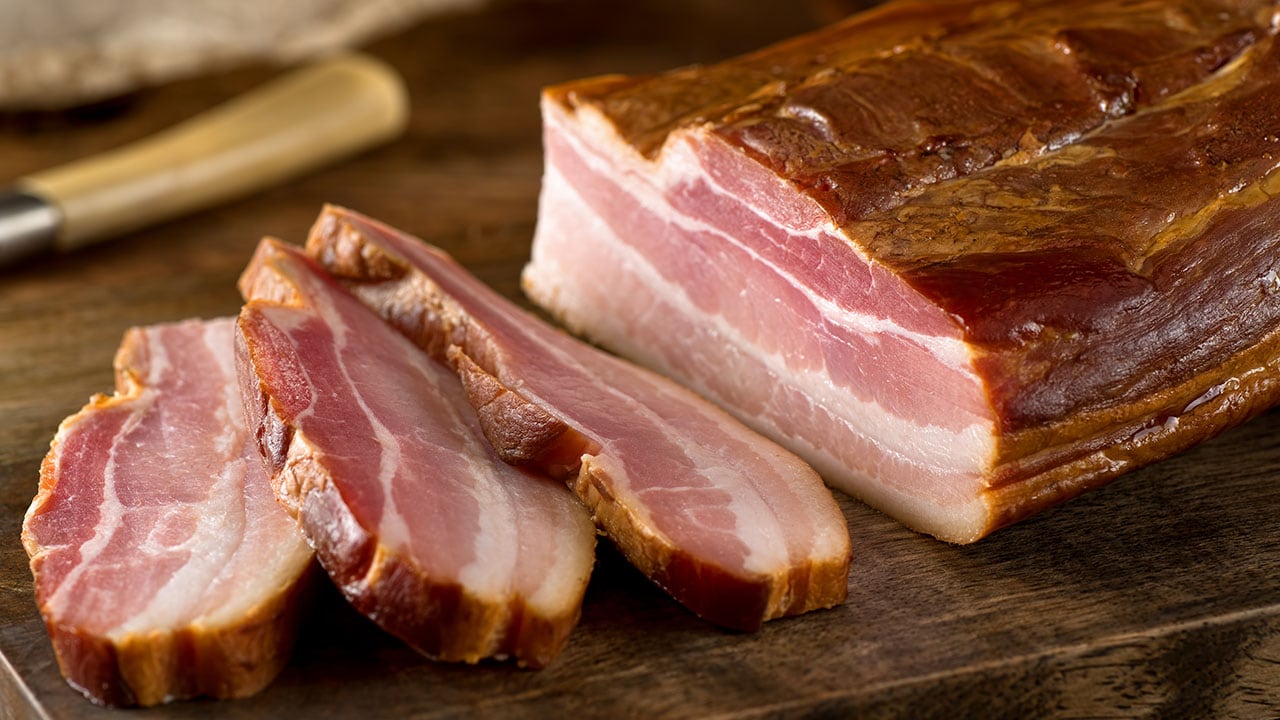 There is no universal form of bacon, believe it or not. The bacon we often associate with a plate of sunny-side-up eggs and a few pieces of buttered toast is not necessarily the same product you’ll find if you travel the world in search of the savory dish.
There is no universal form of bacon, believe it or not. The bacon we often associate with a plate of sunny-side-up eggs and a few pieces of buttered toast is not necessarily the same product you’ll find if you travel the world in search of the savory dish.
For one, there has long been confusion over the differences between bacon and pork belly. Both cuts of pork are sourced from the pig’s fatty abdominal region, but they are not quite one and the same.
- Streaky pork bacon is pork belly, but pork belly isn’t bacon. Confused? Pork belly is the whole slab cut from the fleshy underside of a pig. Streaky pork bacon is cut from this slab.
- Pork belly is unsmoked and uncured, while what we know of as bacon can sometimes undergo a lot of processing—not our ButcherBox bacon, however.
- Pork belly is sourced from the belly of a pig, while bacon can be sourced from different parts of the pig such as the back, collar, shoulder, and jowls.
- Bacon and pork belly are prepared in very different ways. Read more in our “Bacon vs. Pork Belly: What’s the Difference?”
Beyond the distinction between bacon and pork belly, there are also quite different takes on bacon depending on where you are in the world.
A few types you can find in “All the Different Types of Bacon – From Canadian Bacon to Coconut Bacon,” include:
- Irish Bacon
- Rashers
- Salo
- Speck
- Pancetta
- And even duck bacon
The Basics of Cooking Bacon
You can cook bacon in a pan on the stovetop, in the oven, or in a skillet. If you’re feeling adventurous or in need of a quick slice of bacon, we also have some tips for cooking bacon both on the grill and in the microwave. For details on all these, we recommend “The Different Ways to Cook Bacon.”
Cooking Bacon in the Oven
The easy way to get crispy bacon every time is to cook in the oven. It is such an easy method, oven-cooking bacon is considered a major kitchen hack. Here is how we cook bacon in the oven:
- Spread out bacon evenly on a cooking tray.
- Turn on oven to 375°F and place bacon on the high or middle rack. No need to preheat the oven.
- Flip bacon after about 10 minutes.
- Depending on the level of crispiness you enjoy, cook for 5–10 more minutes and then remove from the oven.
- Alternate: Another way to cook bacon in the oven by preheating to 400°F and then cooking on a baking sheet for 15 minutes.
- Tip: Use a piece of tinfoil or some parchment paper for easier cleanup.
Some of our Favorite Bacon Recipes
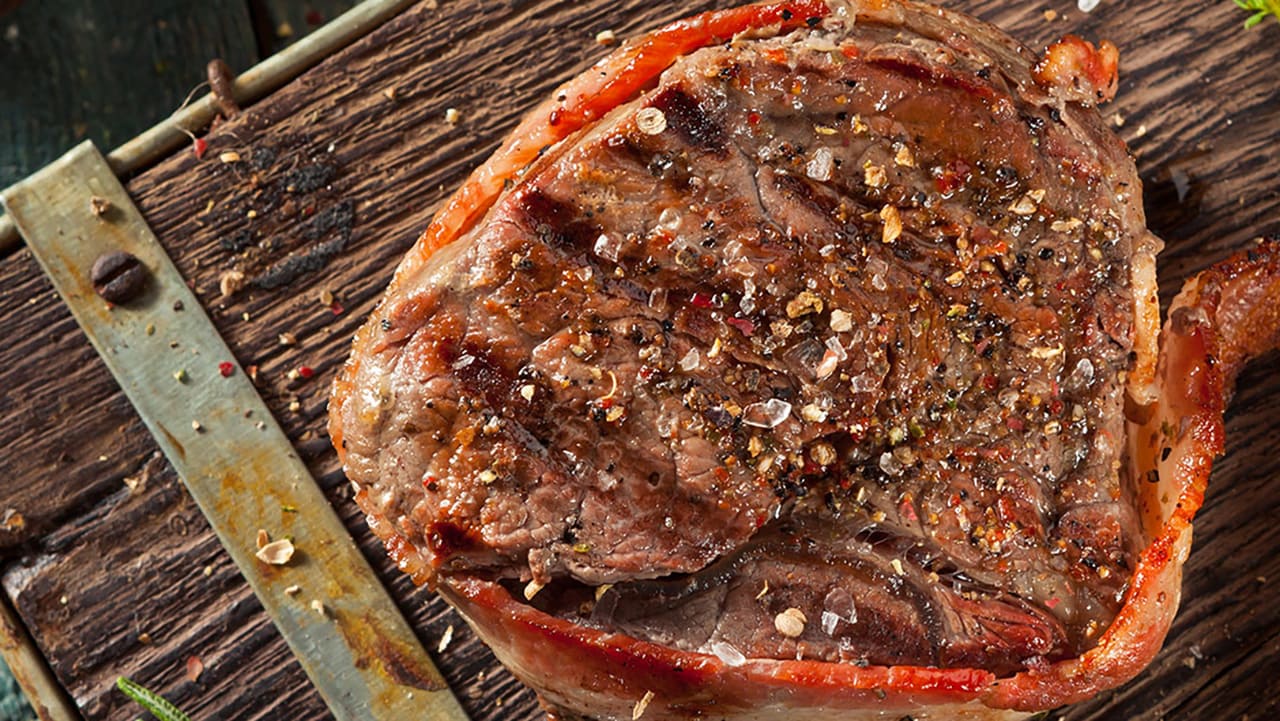 We firmly believe that bacon can be enjoyed at every meal. Our favorite way to incorporate bacon is by wrapping other cuts of meat in sweet and salty pork. As always, be warned: Adding bacon to anything makes it one-hundred times better.
We firmly believe that bacon can be enjoyed at every meal. Our favorite way to incorporate bacon is by wrapping other cuts of meat in sweet and salty pork. As always, be warned: Adding bacon to anything makes it one-hundred times better.
Here are our favorite ways to incorporate bacon into our main courses:
- Bacon-Wrapped Filet Mignon
- Honey Bacon-Wrapped Pork Tenderloin
- Bacon-Wrapped Asparagus Stuffed Chicken Breast
There are numerous other ways to incorporate bacon into a main dish. For example, we’ve collected some of our favorite keto-friendly bacon recipes in one place for you to try. We also have some amazing recipes to combine bacon and ground beef.
One of the most popular recipes we’ve created at ButcherBox is also bacon-centric: Our ButcherBox Bacon Burger.
We also love to use bacon in side dishes and appetizers. We even like to add it to our cocktails from time to time. Try some of these unique bacon dishes:
- Bacon Guacamole
- Polenta Cake with Crispy Bacon
- Seared Scallops with Bacon Sauce
- Bacon Sautéed Green Beans
- Tequila, Bacon, and Chill
Lastly, don’t forget dessert. That’s right, bacon is the ideal dessert food.
- Apple Tart with Bacon Fig Syrup
- Bacon Caramel Apples
- Bacon Peanut Butter Truffles
- Chocolate-Covered Bacon
- Bacon Candy
Freezing Bacon and More…
Although it seems like we’ve exhausted all there is to say about bacon, there is still more to vital information to share.
For example, did you know you can make a bacon jam?
Here is our quick and easy recipe for bacon jam that you can use in a number of unique ways:
ButcherBox Easy Bacon Jam
Bacon Jam Ingredients:
- 1 pkg ButcherBox Bacon roughly chopped
- 1 small onion diced
- ¼ c balsamic vinegar
- 1 Tbsp maple syrup
- 2 Tbsp brown sugar
Directions for Bacon Jam:
- Place bacon in a medium saucepan or sauté pan and cook over medium heat until fat begins to render—about 6 minutes. Drain off liquid and discard.
- Place bacon back in the pan and add onions. Cook until bacon begins to get crispy and onions are translucent.
- Add balsamic vinegar and cook until liquid is nearly gone. Add brown sugar and maple syrup, cook until brown sugar is dissolved.
- Turn off heat and let cool for 5 minutes. Pulse in a food processor until a chunky paste is formed. Cool completely.
Rules for Frozen Bacon
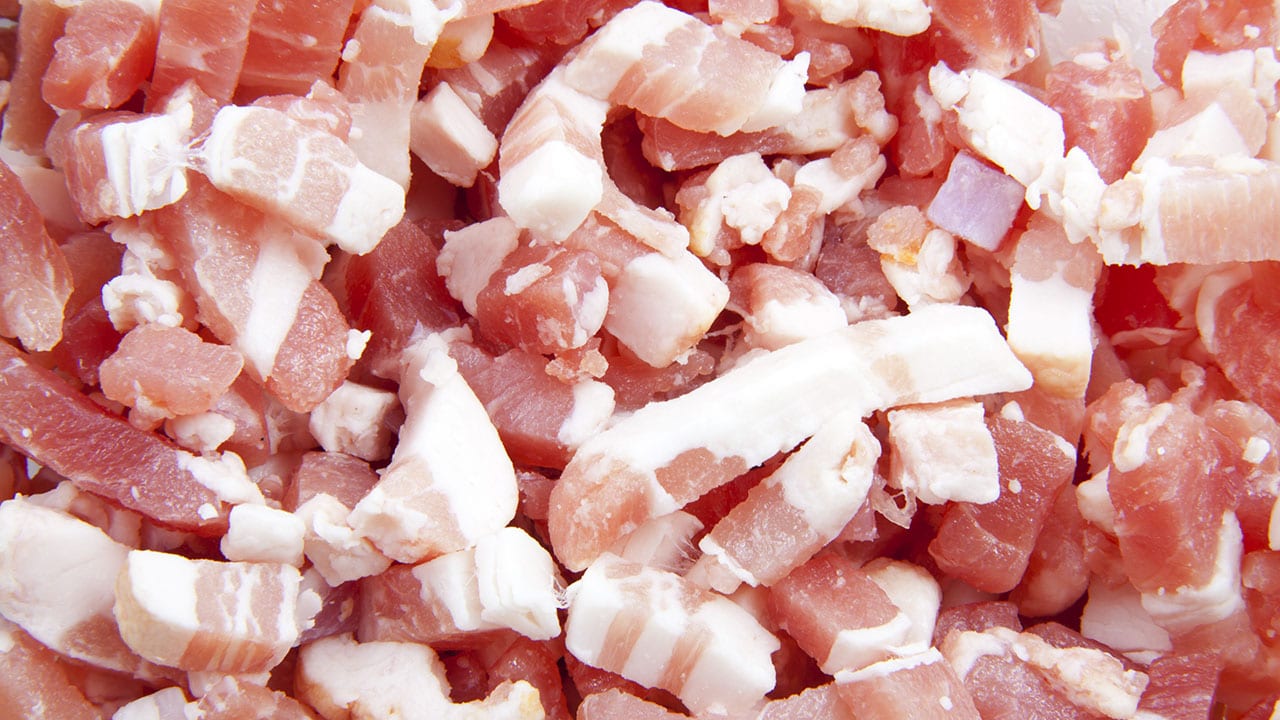 ButcherBox bacon comes frozen. You can easily defrost it in your refrigerator if you have some time, or try any of your favorite defrosting methods.
ButcherBox bacon comes frozen. You can easily defrost it in your refrigerator if you have some time, or try any of your favorite defrosting methods.
If you have bacon that is defrosted or cooked, you can also freeze it a few different ways:

